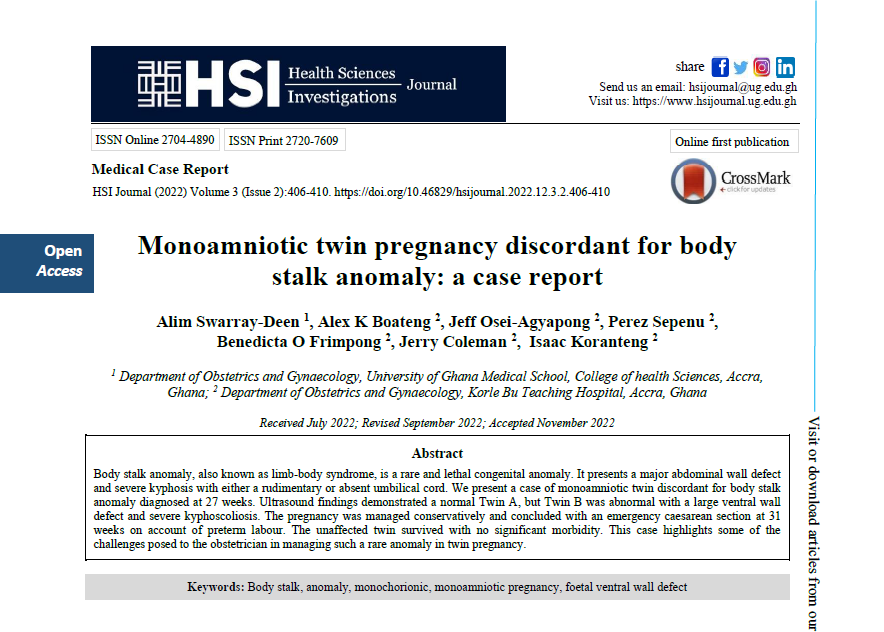Monoamniotic twin pregnancy discordant for body stalk anomaly: a case report
Monoamniotic twin pregnancy discordant
Abstract
Body stalk anomaly, also known as limb-body syndrome, is a rare and lethal congenital anomaly. It presents a major abdominal wall defect and severe kyphosis with either a rudimentary or absent umbilical cord. We present a case of monoamniotic twin discordant for body stalk anomaly diagnosed at 27 weeks. Ultrasound findings demonstrated a normal Twin A, but Twin B was abnormal with a large ventral wall defect and severe kyphoscoliosis. The pregnancy was managed conservatively and concluded with an emergency caesarean section at 31 weeks on account of preterm labour. The unaffected twin survived with no significant morbidity. This case highlights some of the challenges posed to the obstetrician in managing such a rare anomaly in twin pregnancy.


